#Jaques Tourneur
Text

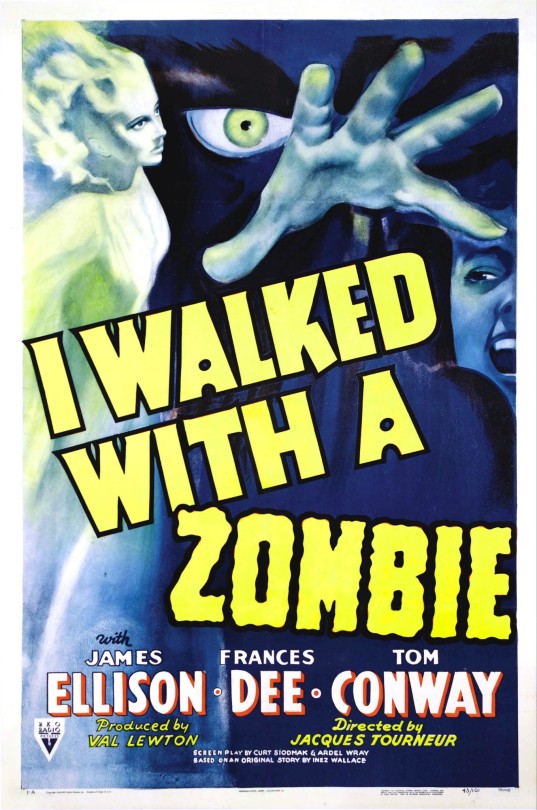
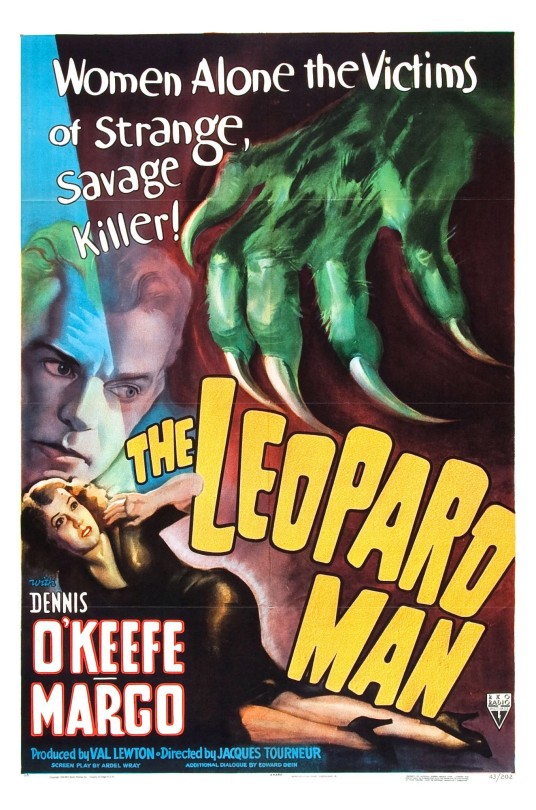

Horror movies directed by Jaques Tourneur
#Jaques Tourneur#horror#cat people#cat people 1942#i walked with a zombie#the leopard man#night of the demon#curse of the demon#horror movie posters#classic horror#monster movies
158 notes
·
View notes
Text

Robert Mitchum - Out of the Past (Dir. Jaques Tourneur, 1947)
16 notes
·
View notes
Text
Jacques Tourneur, Cat people, 1942.

9 notes
·
View notes
Text

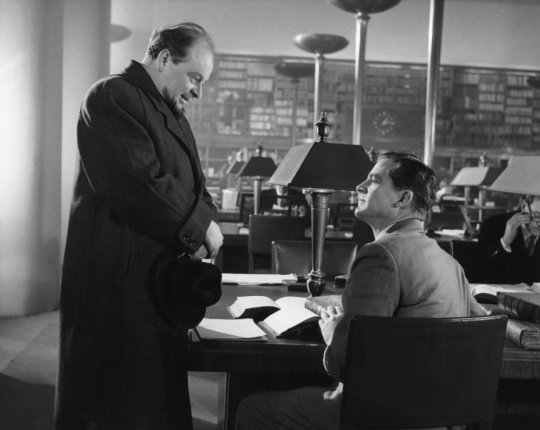

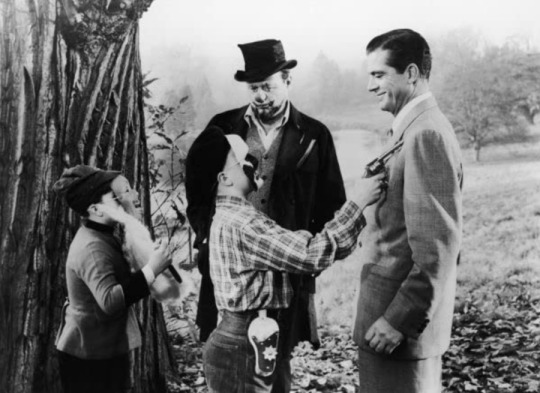
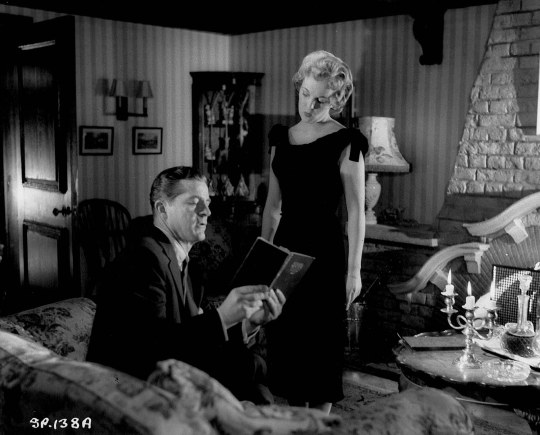
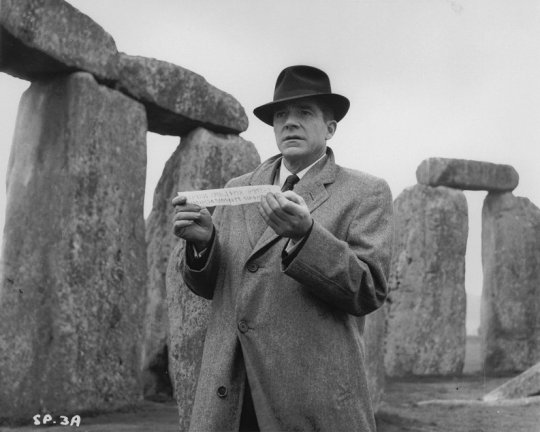



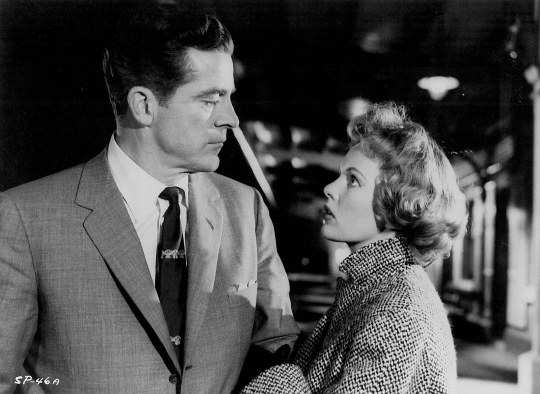
NIGHT OF THE DEMON
UK/USA
1957
Directed by Jaques Tourneur
#cult horror#fifties#british horror#demons#satanism#witchcraft#occultism#supernatural#jaques tourneur#dana andrews#niall mcguiness
4 notes
·
View notes
Text
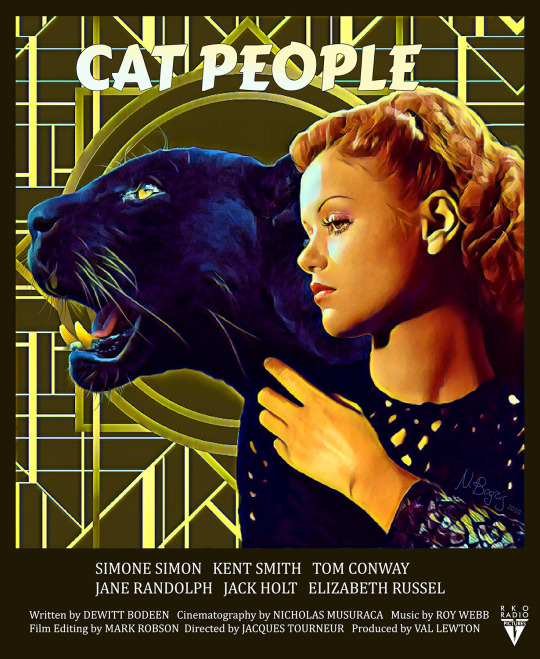
"Cat people", film by Dir. Jaques Tourneur, 1942 🖤🖤🖤
Art by N. Bogcy 2018
10 notes
·
View notes
Text
So here we go, the best 10 movies about 'magic' of 'all time'. That's a tall order and will of course become a list that will be challenged by many.What I have tried to do is collate a list of movies that feature films which have magical themes or very obvious magical references in them. Of course the rash of Harry Potter films, the excellent Lord of the Rings trilogy and even Star Wars could be included. However, from a desire to expand the list of magician inspired or magically themed movies I have left these out as being 'too obvious'.For reasons of brevity I have also not included fully animated movies in this list, so the likes of Fantasia, Sword in the Stone and even The Illusionist (Sylvian Chomet's 2010 film) are not considered.I've also ignored television series, such as The Magician (Bill Bixby trained by Mark Wilson), Jonathan Creek, the quirky 1970's TV series Ace of Wands as well as specific Colombo, Midsummer Murders, One Foot in the Grave episodes that were based around magic and magicians.So this brings us to a quick round-up of some of the best of the magician-in-the-movies films I am aware of. Starting with those just outside the Top Ten - not because of any lack of quality, just because they are a little peripheral to the main list.Passport to Pimlico (1949) directed by Henry Cornelius and featuring great performances from Stanley Holloway and Margaret Rutherford. This great Ealing comedy contains a sequence on the tube train where magician of the day The Great Masoni, drops his case allowing his doves to escape adding to the surreal nature of the comic moment.Dead of Night (1945) directed by Alberto Cavancanti is a superb Ealing portmanteau horror movie which contained a series of stories about a dream told by a guest arriving at remote farmhouse. The film is said to have influenced cosmologists Hoyle, Gold and Bondi to develop the 'steady state theory'. They were inspired by the circular nature of the films narrative. However the movie contains a story about a ventriloquist and a less than charming dummy. Ventriloquism is related to the magical arts, hence its inclusion here. The story is the forerunner of one that is actually in the list, Magic, starring Anthony Hopkins.Thirty Nine Steps (1939) directed by Alfred Hitchcock. The original and perhaps greatest version of this film the climax of which is takes place as in a theatre where a 'memory man' is performing. The Memory Act can be considered as a subset of the magical art of Mentalism. The great magician Harry Lorraine is world famous not only for his 'magic' act but also for his contribution to the training and development of the human memory.The Raven (1963) directed by Roger Corman sees the great Vincent Price, Peter Lorre and Boris Karloff as medieval magicians involved a magical duel. This fun, camp and colourful movie loosely based on the Edgar Allen Poe poem The Raven, is not the greatest example of the Corman-Price collection, but is great fun.Night of the Demon (1957) Jaques Tourneur. This great movie is an adaptation of M R James' story "Casting the Runes". Starring Dana Andrews as a sceptical psychologist 'cursed' by the Faustian looking magician and 'cult' leader Julian Karswell (Nial MacGinnis). In one sequence Karswell dressed as Dr Bobo performs magic at a children's party. The conversation which then ensues between the psychologist and the magician holds within it a host of performance frames and ideas for budding bizarrists out there!. Tourneur apparently never wanted the audience to 'see' the demon. I many ways I wish he had had his way. The film would be even creepier and scarier if the terror was left to the imagination - again bizarre magicians take note!The Magician (1958) directed by Ingmar Bergman. The only reason that film is outside the top ten is because of the possibility of being considered as being 'pretentious' if it is placed where I think it belongs - in the top 5 at least! Max von Sydow plays a travelling magician
and 'magnetic-healer' (harkening back to the days of Mesmer) caught up in a tale about prejudice, honesty, the class system and..... well the whole thing is multilayered. Sydow is brilliant, he rarely speaks, and Bergman's visuals are great. The film has been called a 'thinking mans horror movie/. It is creepy surreal and brilliantly acted and directed.The Great Buck Howard (2008) directed by Sean McGinly is built around John Malkovich's character who is in turn based upon the mentalist Kreskin.Next (2007) directed by Lee Tamahori sees Nicholas Cage as a man who can see a few minutes into the future and disguises his gift by working as a lounge magician. Cage is seen as another kind of 'magician' in the fantasy movie The Sorcerers Apprentice (2010 directed by Jon Turtletaub) which makes direct references to the Disney Sorcerers Apprentice in Fantasia.Magic Man (2010) directed by Roscoe Lever stars Billy Zane who plays Darius, the Magic Man of the title. Billed as a thriller, this movie hasn't received the best of reviews. As I've not seen it yet I can't comment - but maybe a future review of this list may see it included.So onto the Top Ten10. Excelsior Prince of Magicians 1901 directed by Georges Melies. This pioneer of film making was a magician before turning his hand to cine-magic. He produced many short films of which this is only one, but many of which featured movie versions of stage tricks that magicians would love to be able to actually do. He was one of the first film makers to feature stop frame, time lapse and multiple exposures. He also hand painted many of the black and white films he shot. A true innovator.9. The Grim Game 1919 directed by Irvin Wilat. Not the greatest of movies to watch, but from a magician's point of view a must. It featured Harry Houdini in the title role showcasing his feats of escapology. Houdini, not only a great magician but a great entrepreneur embraced early cinema but to be quite honest he made little lasting contribution to cinematic art. In some ways, perhaps, Melies earlier 'trick photography' lessened some of the dramatic impact Houdini's live performances will have had.8. Lord of Illusions (1995) directed by Clive Barker and based on his novel of the same name. This film is notable for its magical references. Not only does the 'evil' lead character Nix have supernatural powers, but his disciples have them. One of his disciples, Swann, after Nix's early demise (prior to his later resurrection) uses his magical powers to become a popular illusionist. The staged magic sequences are well done, there is a cameo appearance by the great Billy McCombe and the Magic Castle is represented as a place of secrets. The basic concept that 'magic is a dangerous reality' is a great theme for the Bizarre Magicians out there.7. Cast a Deadly Spell (1991) directed by Martin Cambell, sees Detective, Harry Philip Lovecraft (played by Fred Ward) living in a 1940's Los Angeles where magic is common place. He is recruited by a rich man to find a lost book - yeap, you've got it... The Necronomicon! It's really a Bogart-esque film-noire with a magical flavour, of course by definition then there are magicians. It's witty, fun and full of Lovecraftian references. Unfortunately at the time of writing it, unlike its less sharp sequel (Witch Hunt) is not available for purchase on DVD. Witch Hunt (1994) directed Paul Schrader. A sequel to Cast a Deadly Spell in which detective, H. Phillip Lovecraft played by Dennis Hopper combats the evils and corruption of a magic wielding senator. As a sequel not shoddy, but perhaps not quite as fun as the first movie.6. The Great Kandinski (1995) directed by Terry Windsor. This 'made for TV' movie must be included in this list, not only for its charm and humour, but for its sensitivities. Richard Harris (whose work is admirable) plays a retired escapologist living in a nursing home. The story revolves around Kandiski's desire to 'chase one more secret' and do one 'final show'.
The escape featured is Houdini's Water Torture cell, which is a testament to the iconic nature of that one illusion.5. Nightmare Alley (1947) directed by Edmund Goulding. An impressive movie and perhaps one of the all time greatest examples of film noire. Tyrone Power plays a 'psychic con man' Stanton Carlyle whose trail of deceit and self deceit take from rags to riches to rags. Of course the magicians out there will immediately see a link to a performer who used to go out under the name Rinaldo, but was better known professionally and now to mentalists' world wide as Stanton Carlisle. (1928 - 1990). Stanton insisted, despite many good natured challenges, that that was his real name and was not influenced by the Goulding film.4. House of Games (1978) directed by David Mamet. OK not really a magic film, but features a performance of one of my all time magic heroes, Ricky Jay. Ricky is one of a group of con-men in this Hitchcockesque thriller. Mamet, as always does a great job in capturing mood and the movie explores human motivations and behaviours. Ricky Jay is of course no stranger to the big screen, with roles in the Bond Movie, Tomorrow Never Dies, Magnolia, Buck Howard, The Prestige and many more. This, I believe however was his first venture onto the 'big screen'3. Houdini (1953) directed by George Marshall with Tony Curtis in as Houdini. This movie does have a lot to answer for in that it creates some of the longer lasting myths about the life of the genuinely 'mythic' Houdini. His death on stage as a result of performing the 'water torture cell' is not fact, but the movie certainly hints at it. The 'brush with death' in a frozen river; the first performance of the 'straight jacket' at a Magicians Society dinner almost surely never happened - but the romance and innocence of the moment saves it. The magical advisor on this movie was Dunninger.I suppose it is worth mentioning in passing that in 1998 there was a TV movie about Houdini (directed by Pen Denshem) and an earlier attempt at a biopic remake in 1976 with Paul Michael Glaser in the title role (directed for television by Melvile Shavelson). The movie Death Defying Acts (2007) directed by Gillian Armstrong focuses on Houdini's documented interest in mediums and psychics and he is really the vehicle through which another story can be told.2. Magic (1978) directed by Richard Attenborough and staring Anthony Hopkins. In the film Hopkins' character starts out as a magician, but sees success as a ventriloquist. The movie charts the fall into insanity as the relationship Hopkins has with his dummy 'Fats'. It's a classic movie with some of the creepier overtones being softened by, what some claim to be, slower sequences of sentimentality.1. The Illusionist (2006) directed by Neil Burger and staring Ed Norton. The pace and the feel of this film is wonderful. It is a love story with some great performances from a superb cast. The magical advice came from Ricky Jay and Michael Webber. Norton as Eisenhiem is the ideal stage magician. The cinematography is brilliant, the plot nicely involved and with, perhaps a few surprises.1. The Prestige (2006) directed by Christopher Nolan. Whilst The Illusionist is sumptuous and engaging and at its core 'hopeful' and 'romantic', The Prestige is darker and deals with revenge, envy and competitiveness. Great performances from Hugh Jackman and Christian Bale as the feuding magicians each with a 'secret' and a narrative that is non-linear make the film engaging and well worth the little effort you need to keep up with the tangled web of intrigue. The 'prestige', the finale of the film, contains revelations that may surprise. Intelligent scripting brings the emotional tension to life and the rich magical references (Chung Ling Soo, The Bullet Catch, The Water Torture) make this film a must for magicians. Ricky Jay appears as an established stage performer and Michael Caine is great as the illusion builder - although I would never ask him to build
me a vanishing bird cage!I really can't separate these two films in terms of quality of acting, direction and story so they share first place billing with the less serious....Magicians (2007) actually deserves a Gold Star in this list. Directed by Andrew O Connor and with script written in collaboration with David Britland, Andy Nyman and Anthony Owen and others this is a magical tour de force. Opting for a comic look at the world of the conjuror, Magicians, sees Mitchell and Webb rattle through some great one-liners; pay homage to some key magicians and have a real knock at some of the oddness that is part and parcel of the magic scene. The great Pat Page makes an appearance, and most of the magic 'stalls' at the magic convention hosting the competition at the centre of the films plot were provided by well known magic dealers.
Source by Alan B Jones
0 notes
Photo

#simone simon#kent smith#tom conway#jane randolph#jack holt#jaques tourneur#movie poster#movie posters#films#film#posters#horror#cat people#40s#1940s#classic hollywood#old movie#shows#show#poster
50 notes
·
View notes
Photo

“Whatever possessed me to marry you?”
“That’s the question I often quire of myself, madam, to which there is no satisfactory answer, save one perhaps? And that is that no one else would have you.”
Waldo Trumbull - The Comedy of Terrors (1963)
#the comedy of terrors#vincent price#joyce jameson#peter lorre#boris karloff#jaques tourneur#undertaker#a real sunovabitch#murderer#con artist
22 notes
·
View notes
Photo

The Comedy of Terrors (1963) dir. Jaques Tourneur
#the comedy of terrors#jaques tourneur#vincent price#peter lorre#boris karloff#basil rathbone#horror#horror movies#comedy#60s horror#poster#movies#rb
129 notes
·
View notes
Photo

Simone Simon in: Cat People (Dir. Jacques Tourneur, 1942).
Source
147 notes
·
View notes
Photo

Lovely poster. Found on facebook page Vintage Cheese.
2 notes
·
View notes
Photo


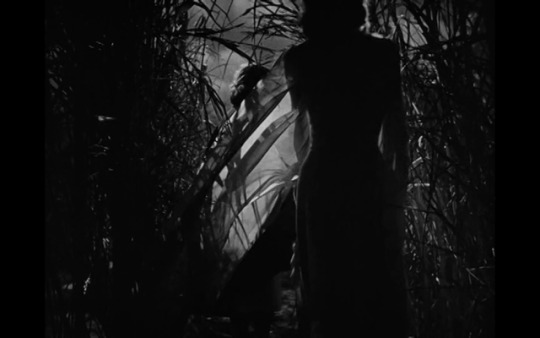
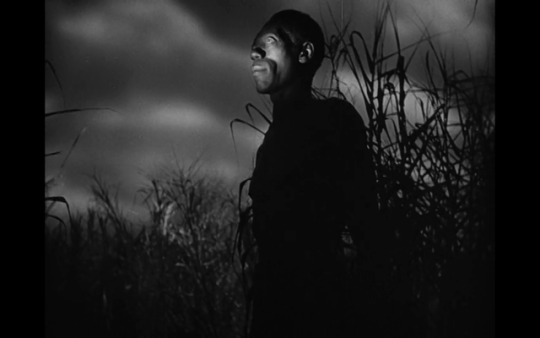



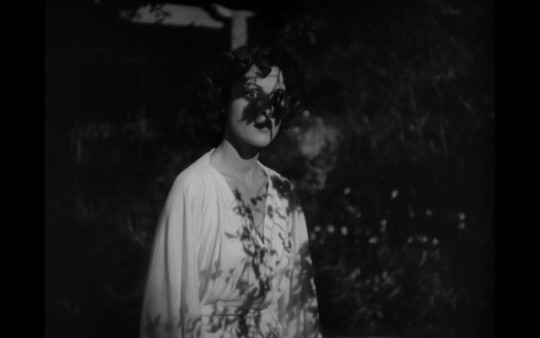


I WALKED WITH A ZOMBIE
-Jaques Tourneur.
2 notes
·
View notes
Text
§ 2.659. La bestia humana (Jean Renoir, 1938)

No he visto muchas cosas de Renoir. Empecé con La gran ilusión (1937) una película que no comprendí, no me entró. Sé que es buena, pero no la acabé de encontrar su agrado. Aguas pantanosas (1941) me gustó menos que Un grito en el pantano (Jean Negulesco, 1952).Ésta es una película difícil, la locura, mezclada con una gran misoginia y probablemente un alcoholismo hereditario no es un tema fácil. Y sin embargo sale perfectamente airoso, no tanto en el guión, que por supuesto -se basa en una obra de Émile Zola-, sino, sobre todo en el planteamiento estético. El blanco y negro verdaderamente nítido, y unos enfoques cercanos y en plano fijo. El tratamiento de la violencia es crudo y seco. Muy duro el abuso con la mujer. Descarnado y cruel.La determinación del personaje está muy bien lograda. Su transformación es también un logro de la actuación. Sus remordimientos, sus sentimientos de culpa, sus sospechas de tener la mente viciada por el consumo de alcohol por parte de sus ancestros...Jean Gabin es un actor que siempre me ha parecido mayor. No me le imagino de joven. Simone Simon la tengo tan asociada con La mujer pantera (Jaques Tourneur, 1942) que me cuesta verla en otros papeles. Es una actriz determinada por un personaje.
0 notes
Text
Sous l’Occupation, le cinéma français, qui connait un surprenant essor, recueille quelques-uns de ses plus grands triomphes, et voit apparaitre une nouvelle génération d’auteurs de talent.
Les Enfants du paradis de Marcel Carné d’après un scénario de Jacques Prévert (1945) avec Arletty, Jean-Louis Barrault, Maria Casarès, Pierre Brasseur, Marcel Herrand, Pierre Renoir
Dernier Atout de Jacques Becker (1942) avec Raymond Rouleau, Mireille Balin, Pierre Renoir, Georges Rollin, Noël Roquevert, Jean Debucourt
Lumière d’été de Jean Grémillon (1943) avec Madeleine Robinson, Paul Bernard, Madeleine Renaud, Pierre Brasseur
L’Éternel Retour de Jean Delannoy (1943) avec Jean Marais, Madeleine Sologne, Jean Murat
En dépit des contraintes idéologiques et économiques et de la tutelle vigilante de la censure – et après une année 1941 plutôt hésitante – le cinéma français va connaître dès 1942 un prodigieux essor.
Après trois ans de silence, Carné et Prévert présentent au public un conte médiéval énigmatique, glacial et raffiné, Les Visiteurs du soir (1942), histoire d’un amour plus fort que la mort et que le diable (l’inoubliable Jules Berry, méphistophélique à souhait) vient troubler. Le metteur en scène et le scénariste n’ont certainement pas prévu que leur œuvre deviendrait le manifeste d’une renaissance du cinéma français. Et pourtant leur film, même s’il a vieilli aujourd’hui, va rendre espérance et dignité à un art national au moment où le besoin s’en faisait le plus sentir. Ils ouvriront la voie à Cocteau et Delannoy : L’Eternel Retour (1943), transposition moderne du mythe de Tristan et Iseut, sera un grand succès.
La production se poursuit
Confirmant ce renouveau, on pourrait citer au moins deux films fantastiques fort intéressants, La Main du diable (1942), de Maurice Tourneur et Le Baron fantôme (1942), de Serge de Poligny, où joue Cocteau, qui signe les dialogues. On doit également à Poligny La Fiancée des ténèbres (1944), que l’on ne découvrira qu’après la Libération, de même que La Cage aux rossignols (1944), de Jean Dréville. Mentionnons encore un drame très noir d’Albert Valentin, Marie-Martine (1942), dont le scénario et les dialogues sont dus à Jean Anouilh. Avec son chef-d’œuvre, Douce (1943), féroce satire sociale qui sera censurée, Autant-Lara fait mieux que tenir les promesses du Mariage de Chiffon (1941) et de Lettres d’amour (1942).
D’autres metteurs en scène vont pouvoir poursuivre leur œuvre sans rencontrer trop d’obstacles. Sacha Guitry (qui sera arrêté en 1944 sous l’accusation de collaboration malgré son refus de travailler pour la Continental) affirme son talent d’acteur-réalisateur dans deux films romantiques comme Le Destin fabuleux de Désirée Clary (1942) et La Malibran (1943), ou dans un sujet contemporain avec Donne-moi tes yeux (1943). Abel Gance dédie au maréchal Pétain Vénus aveugle (1941), qu’il fait suivre d’une adaptation trop raisonnable du Capitaine Fracasse (1942). Avec six films en quatre ans, Christian-Jaque reste l’un des cinéastes les plus prolifiques de l’Occupation ; si Carmen (1943) n’offre pas grand intérêt, La Symphonie fantastique (1942), consacrée à la vie de Berlioz, n’est pas sans qualités ; sur un scénario de Mac Orlan, Voyage sans espoir (1943) ressuscite avec bonheur le réalisme poétique d’avant-guerre. Mais son œuvre la plus marquante sera Sortilèges (1944), Ce curieux film, dont Prévert a écrit le scénario, ne sortira qu’après la Libération. Avec six films également, la carrière d’Henri Decoin s’annonce aussi féconde. Outre Premier Rendez-vous (1941) et Les Inconnus dans la maison (1942), il faut retenir L’Homme de Londres (1943), une autre adaptation de Simenon, avec une bonne reconstitution d’atmosphère. Les deux premiers films d’André Cayatte, La Fausse Maîtresse (1942) et Au Bonheur des dames (1943) sont respectivement adaptés de Zola et de Balzac. Puis c’est Pierre et Jean (1943), beaucoup plus réussi, inspiré de l’œuvre de Maupassant.
Le Baron fantôme de Serge de Poligny (1942) avec Odette Joyeux, Jany Holt, Alain Cuny, André Lefaur, Gabrielle Dorziat
La Main du diable Maurice Tourneur (1942), inspiré de la nouvelle de Gérard de Nerval, La Main enchantée. Avec • Pierre Fresnay, Josseline Gaël, Noël Roquevert, Guillaume de Sax, Pierre Larquey
La Cage aux rossignols de Jean Dréville (1945) avec Noël-Noël, Micheline Francey, Georges Biscot, René Génin
Douce de Claude Autant-Lara (1943) avec Odette Joyeux, Roger Pigaut, Madeleine Robinson, Marguerite Moreno
Le Mariage de Chiffon de Claude Autant-Lara (1942) avec Odette Joyeux, André Luguet, Jacques Dumesnil
Le Destin fabuleux de Désirée Clary de Sacha Guitry (1941) avec Sacha Guitry, Jean-Louis Barrault, Aimé Clariond
Vénus aveugle d’Abel Gance (1941) avec Viviane Romance, Georges Flamant, Henri Guisol
La Symphonie fantastique de Christian-Jaque (1942) avecJean-Louis Barrault, Renée Saint-Cyr, Lise Delamare
Voyage sans espoir de Christian-Jaque (1943) avec Jean Marais, Simone Renant, Paul Bernard
PREMIER RENDEZ-VOUS – Henri Decoin (1941) – Danielle Darieux, Fernand Ledoux, Louis Jourdan, Gabrielle Dorziat
Les Inconnus dans la maison d’Henri Decoin (1942) avec Raimu, Juliette Faber, Jean Tissier, Jacques Baumer, Noël Roquevert
Pierre et Jean d’André Cayatte (1943) avec Renée Saint-Cyr, Noël Roquevert, Jacques Dumesnil
Clouzot, Becker, Bresson
Au sein de la nouvelle génération d’auteurs qui apportent alors un souffle nouveau au cinéma français, trois grands noms se détachent : Clouzot, Becker et Bresson. Clouzot a fait ses débuts de réalisateur avec un policier, L’assassin habite au 21 (1942), une réussite honorable. En 1943, il va réaliser le film qui restera sans doute son chef-d’œuvre, Le Corbeau, l’une des œuvres qui marquera le plus profondément cette époque par son pessimisme amer et violent.
En même temps que Clouzot, Jacques Becker fait également ses débuts avec un policier, Dernier Atout (1942). Un film extrêmement brillant qui connaît un vif succès commercial. Cet ancien assistant de Renoir adopte un style réaliste où se mêlent les influences du cinéma français d’avant-guerre et du film policier américain. Avec Goupi mains-rouges (1943), il s’essaye avec bonheur à la fresque paysanne dans le goût naturaliste. Quant à Falbalas (1944), achevé au moment de la Libération ce sera le premier film de sa célèbre série de « sujets parisiens».
Dès sa première œuvre, Les Anges du Péché (1943), Robert Bresson se révèle comme un investigateur subtil et racinien de l’âme humaine, avec le concours précieux d’un dialoguiste de génie : Jean Giraudoux. S’affirmant dès lors comme l’un des plus authentiques créateurs du cinéma français, il poursuit son éblouissante carrière, toujours en solitaire avec Les Dames du bois de Boulogne (1944), une adaptation austère d’un épisode de « Jacques le Fataliste» de Diderot, avec des dialogues de Cocteau.
L’assassin habite au 21 d’Henri-Georges Clouzot (1942) avec Pierre Fresnay, Suzy Delair, Jean Tissier, Pierre Larquey, Noël Roquevert
Le Corbeau d’Henri-Georges Clouzot, sorti en 1943 avec Pierre Fresnay, Ginette Leclerc, Pierre Larquey, Micheline Francey
Falbalas de Jacques Becker (1945) avec Raymond Rouleau, Micheline Presle, Jean Chevrier
Goupi Mains Rouges de Jacques Becker (1943) avec Fernand Ledoux, Georges Rollin, Blanchette Brunoy
Les Anges du péché de Robert Bresson (1943) avec Renée Faure, Jany Holt, Sylvie, Silvia Monfort, Louis Seigner
Les Dames du bois de Boulogne de Robert Bresson (1945) avec Maria Casarès, Élina Labourdette, Paul Bernard
Félicie Nanteuil de Marc Allégret (1945) avec Claude Dauphin, Micheline Presle, Louis Jourdan
Au Bonheur des Dames d’André Cayatte (1943) tiré du roman d’Émile Zola avec Michel Simon, Albert Préjean, Blanchette Brunoy, Suzy Prim
Les Visiteurs du soir de Marcel Carné (1942) avec Arletty, Alain Cuny, Marie Déa, Jules Berry
En attendant la Libération
Jean Grémillon poursuit une œuvre qui reste dans la meilleure tradition du « réalisme poétique ». Si Lumière d’été (1942), vigoureux acte d’accusation contre l’hypocrisie des classes dirigeantes, inquiète la censure, Le ciel est à vous (1943), qui exalte l’héroïsme désintéressé d’un couple d’aviateurs, sera considéré comme le symbole des valeurs nationales – aussi bien par Vichy que par la Résistance.
Il faudrait encore citer l’excellent Comte de Monte-Cristo (1942) en deux époques, de Robert Vernay, ou l’inégal Léo Joannon avec Le Camion blanc (1942) et Le Carrefour des enfants perdus (1943), qui révéla Serge Reggiani. Ou encore L’aventure est au coin de la rue (1943), de J. Daniel-Norman, qui sera l’un des derniers grands succès de l’Occupation. Il serait également injuste d’oublier deux films de Marc Allégret, Félicie Nanteuil (1942) et Lunegarde (1944).
A la Libération s’achève enfin le tournage des Enfants du paradis, la réussite sans doute la plus exemplaire de cette époque. 220 films, 82 réalisateurs, dont 20 débutants, tel est le bilan positif du cinéma français d’août à juillet 1944.
1940-1945 : Un essor surprenant Sous l'Occupation, le cinéma français, qui connait un surprenant essor, recueille quelques-uns de ses plus grands triomphes, et voit apparaitre une nouvelle génération d'auteurs de talent.
#abel gance#andré cayatte#christian jaque#claude autant lara#henri decoin#henri georges clouzot#jacques becker#jean dréville#Jean Grémillon#marc allégret#marcel carné#maurice tourneur#robert bresson#sacha guitry
0 notes
Text

Poster of "Cat people" 1942 movie. Dir. Jaques Tourneur 🖤♥️🖤
2 notes
·
View notes
Text
Per la settimana di Natale THE LOVING MEMORY si veste a festa, scegliendo luci ed ombre del genere NOIR. Scoprite il prezioso approfondimento sul genere firmato da EDWARD CUTARELLA, regista americano, abruzzese d'adozione, attualmente impegnato sul set del suo nuovo cortometraggio. Dopo questa prima, fondamentale INTRODUZIONE, la retrospettiva sul Noir prosegue in 3 differenti puntate, presentando 3 film illuminanti, se pure sconosciuti al grande pubblico.
Il Noir è un genere cinematografico che trova il suo apice negli Stati Uniti degli anni ’40 e ‘50.
Trovare una definizione adeguata a questo stile non è semplice, visto che il Noir non ha regole né impostazioni ben precise, e prende in prestito elementi tipici del giallo e dai romanzi hard-boiled. Dal punto di vista stilistico, il genere si distingue per l’elevato contrasto del bianco e nero (rappresentazione dell’eterna lotta fra il bene e il male) e per la ricerca di inquadrature non convenzionali.
In ogni caso, un tipico film noir possiede 5 elementi caratteristici che lo contraddistinguono:
l’oniricità
la stranezza
l’erotismo
l’ambivalenza
la crudeltà
Per il resto, il genere non impone particolari limiti dal punto di vista narrativo: molti film noir sono ambienti in grandi città, altri in centri più piccoli o rurali. Anche i protagonisti possono essere i più vari: oltre al classico detective troveremo giornalisti, gangster, poliziotti o semplici uomini comuni, immancabilmente ritratti quando si trovano nel posto sbagliato, al momento sbagliato.
Più che per i dettami precisi, il Noir si definisce quindi per la sua atmosfera unica e particolare. Nelle parole del critico Eddie Muller : “se in un film un detective va ad indagare su un caso di infedeltà matrimoniale e nel mentre risolve anche un paio di omicidi allora parliamo di giallo, ma se questo nostro detective va ad indagare su un caso di infedeltà matrimoniale e durane le indagini si innamora di questa donna, uccide suo marito per lei, e poi viene ucciso lui stesso dall’amante di lei, allora in questo caso parliamo definitivamente di film noir.”
Per chi fosse interessato ad approfondire il genere Noir ho scelto 3 film, essenziali per iniziare un percorso di scoperta:
1* IL DIRITTO DI UCCIDERE (In a Lonely Place) di Nicholas Ray (USA 1950); con Humphrey Bogart e Gloria Grahame.
2* D.O.A. (Due ore ancora) di Rudolph Maté (USA 1949); con Edmond ‘O Brien.
3* LA CATENA DELLA COLPA (Out of Time) di Jaques Tourneur (USA 1947); con Robert Mitchum, Kirk Douglas e Jane Greer.
Il Diritto di uccidere (1950)
DOA Due ore ancora (1949)
Le catene della colpa (1947)
EDWARD CUTARELLA
#thelovingmemory
#filmlovers #cinemalovers #noir
#Natale #Noir: su #TheLovingMemory una retrospettiva di genere, firmata dal regista Edward Cutarella. Per la settimana di Natale THE LOVING MEMORY si veste a festa, scegliendo luci ed ombre del genere NOIR.
#approfondimenti#bogart#cinema#cinema anni 40#cinema anni 50#edward cutarella#golden age#guest editor#hollywood#humphrey bogart#Insights#introduzione#nicholas ray#noir#premessa#retro
0 notes